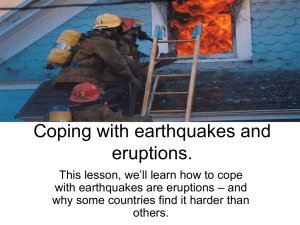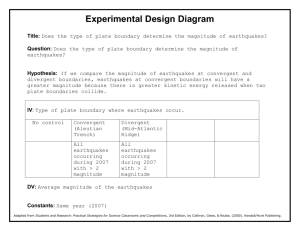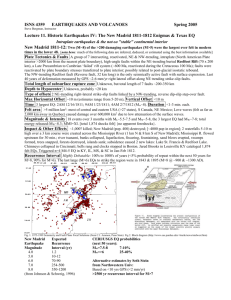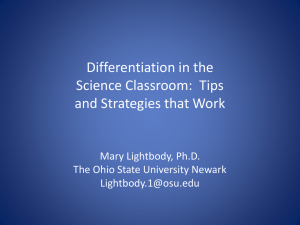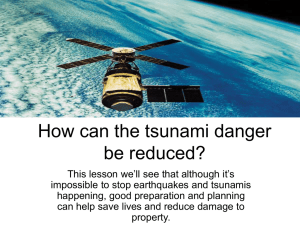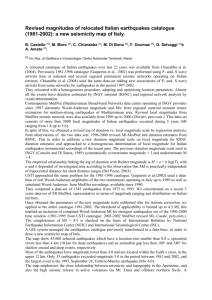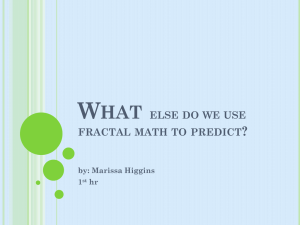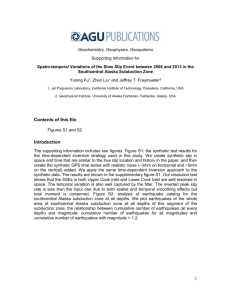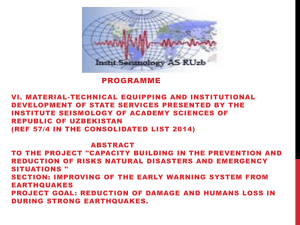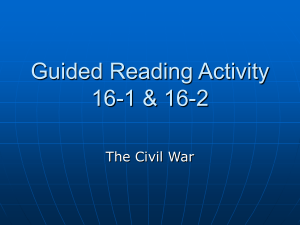Topic 2: The 1811-1812 earthquakes
advertisement
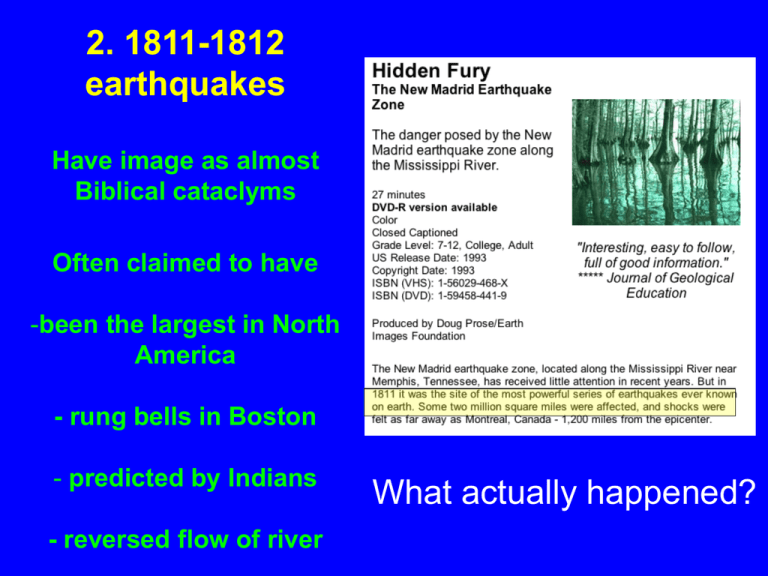
2. 1811-1812 earthquakes Have image as almost Biblical cataclyms Often claimed to have -been the largest in North America - rung bells in Boston - predicted by Indians - reversed flow of river What actually happened? New Madrid 1811 The Mississippi river valley was the frontier. New Madrid, which claims to be the oldest city west of the Mississippi, was settled in 1789. It was named in hope of pleasing the Spanish, who controlled the area. In 1803, the Louisiana Purchase passed Congress by a vote of 59-57. It doubled the size of the U.S. and opened the Mississippi, all for about $15 million. The river became the major transportation route for settlements west of the Appalachians. Most people in the area lived in small towns along the river. St. Louis was small, and the city of Memphis didn’t exist yet. The New Madrid area had about 3000 residents. http://www.enchantedlearning.com DD 5.5 Tension with England had been building for years, and war seemed forthcoming. The country was bitterly divided. “War hawks” from the south and west favored war to expand the country, while New Englanders and New Yorkers were opposed. The U.S. was already fighting frontier Indians, backed by England. Although in November 1811 U.S. forces defeated a coalition of Indian tribes led by Shawnee chief Tecumseh at the battle of Tippecanoe, the Indian threat remained. A bad time http://www.legend sofamerica.com/ http://www.ohiohi storycentral.org/ New Madrid: December 16, 1811: “The house danced about, and seemed as if it would fall on our heads. I soon conjectured the cause of our trouble, and cried out that it was an Earthquake, and for the family to leave the house, which we found very difficult to do, owing to its rolling and jostling about. The shock was soon over, and no injury was sustained, except the loss of the chimney.” Sequence of earthquakes over months, with three major shocks The earthquakes went on and on. Most were small, but one on January 23, 1812 was large enough to disrupt riverbanks and create more sand blows. February 7, 1812 : ” A concussion took place much more violent than those preceding.” The town’s houses, which sustained some damage like broken chimneys in the previous earthquakes but had not collapsed, were “all thrown down.” Historical Society of Missouri DD 5.3 USGS Photo by M. Fuller,1904 DD 5.2 “Trees were falling in every direction — some torn up by their roots, others breaking off above the ground, and limbs and branches of all sizes flying about us.” John Walker, camped near Little Prairie, near present-day Caruthersville, Missouri. “The earth was horribly torn to pieces. The surface of hundreds of acres was, from time to time, covered over of various depths of the sand which issued from the features, some of which closed up immediately after they had vomited forth their sand and water.” DD 5.1 Postdiction, not prediction Shawnee chief Tecumseh didn’t prophecy the earthquakes Addressing tribes after the earthquakes, he pointed to what had happened as divine support for his cause: “The Great Spirit is angry with our enemies. He speaks in thunder, and the earth swallows up villages.” Did the Mississippi run backwards after February shock? Historical Society of Missouri DD 5.4 “The current of the Mississippi was driven back upon its source with the greatest velocity for several hours in consequence of the elevation of its bed. But this noble river was not to be stayed in its course. Its accumulated waters came booming on, and over topping the barrier thus suddenly raised, carried everything before them with resistless power.” Reverse current lasted a few hours. Real or legend? Vertical motion on Reelfoot fault created temporary dams on riverbed that disrupted flow until current cleared them away DD 5.7 Flow over low head dam creates zone where surface water flows backwards, with waterfalls on upstream and downstream sides Sieh and LeVay, 1998 Boatmen perhaps encountered bigger & more complicated version, with back flow downriver from natural dams and slower current upriver Shaking intensity yields low magnitude 7 first inferred, not subsequently quoted 8 DD 5.8 Log cabin damage at New Madrid Minor damage in St Louis, Nashville, Louisville, etc. Not felt in Boston, no church bells ring Hough et al, 2000 Use map to infer the shaking that would have happened in your community Activity 2.1: If 1811-12 happened today -What intensity value is that? - What might you expect today if a similar earthquake happened? DD 1.2 Magnitude keeps shrinking These were big earthquakes year Stein & Wysession (2003) after IRIS But a lot smaller & more common than often stated ~15 earthquakes of this size occur each year Scenario 40x15 km; 2 m slip 30x30 km; 5 m slip 60x15 km; 3.7 m slip Hough, 2004 DD 8.10 Activity 2.2: Fault parameters, seismic moment and magnitude Assuming the largest 1812 NM shock took place on a fault 30 km long x 30 km wide and involved 5 m slip, assume a rigidity of 3x1011 dyne-cm Convert all lengths to centimeters and calculate the seismic moment and moment magnitude If it were magnitude 7.0, what would the slip have been? AFTERMATH “Loss and suffering were brought to the attention of Congress, but in the light of subsequent events it is not certain to what extent assistance was the real object of the agitation or to what extent it was a pretext for land grabbing on the part of certain unscrupulous persons.” (M. Fuller, 1912) People whose lands had been destroyed could get certificates to replace them. Most stayed and sold their certificates for a few cents per acre. Of 516 certificates issued, original claimants used only 20. Speculators in St. Louis acquired most of the others, and “perjury and forgery became so common that for a time a New Madrid claim was regarded as a synonym for fraud.” The earthquake legend grew…
